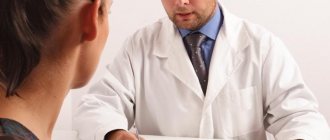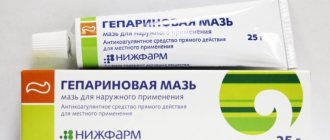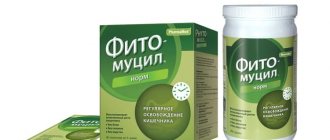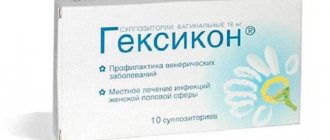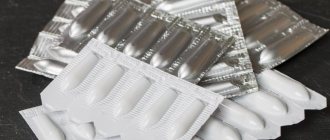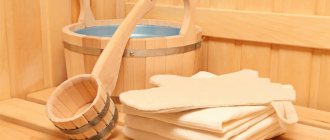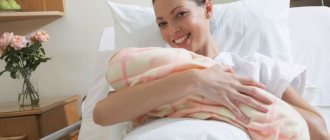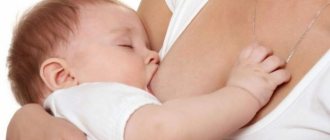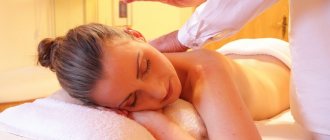Reasons for the development of hemorrhoids after childbirth
During pregnancy, a woman's circulatory system is heavily loaded; congestion in the pelvis, which is the main cause of hemorrhoids, is often observed. The appearance of the disease is also due to the growth of the uterus, which compresses the organs and interferes with the normal outflow of blood. Factors contributing to the development of the disease:
- excess weight;
- poor nutrition;
- low fluid intake;
- pushing during contractions;
- low physical activity;
- bad habits;
- childbirth.
The disease is provoked by frequent constipation, which mothers experience during pregnancy and after childbirth. An excess of hormones affects the tone of the gastric muscles and provokes fecal stagnation. When released, dense masses damage the mucous membranes and cause the appearance of hemorrhoids. To reduce the risk of pathology, a woman during pregnancy and lactation, especially in the first week after childbirth, should monitor her diet.
Signs and possible consequences of the disease
Symptoms of the disease begin to appear with discomfort in the anal area, which intensifies after defecation. Other signs of hemorrhoids:
- pain during bowel movements, burning after;
- irritation, itching in the anal area;
- swelling, hardening of the anal area;
- bleeding during bowel movements;
- feeling of discomfort when sitting for long periods of time.
In the internal form of the disease, the nodes do not yet fall out. The initial stage of the pathology is easily treatable with conventional drugs. External hemorrhoids are characterized by the loss of cones after going to the toilet or lifting heavy objects.
Each subsequent stage aggravates the disease; in advanced cases, it will not be possible to straighten the protruded nodes on your own. Evacuations are accompanied by bleeding and severe pain. Treatment is only surgical.
Hemorrhoids are dangerous at any stage.
If cracks appear in the anus, stool passing through it can cause infection. The chronic form can provoke weakening of the sphincter. Because of this, a person will not be able to retain feces. Pathology often causes thrombosis of hemorrhoids, which leads to tissue necrosis and threatens life.
The caustic mucus released during inflammation provokes severe burning, itching, and swelling appears in the entire groin area. The consequence is paraproctitis. It is characterized by purulent processes in the rectum that destroy tissue. Without prompt treatment, the condition can be fatal to a woman. Regular bleeding from the anus leads to iron deficiency anemia.
Symptoms of hemorrhoids
After giving birth, as soon as the young mother comes to her senses a little, her cloudless happiness may be overshadowed by the following symptoms:
- burning and itching of the anus;
- heaviness in the sphincter area;
- swelling of the perineum;
- pain during bowel movements;
- cracks along the edges of the anus;
- bloody discharge during bowel movements;
- hemorrhoids protruding outward.
Postpartum hemorrhoids can occur in an acute form, or can quickly become chronic. The acute course is characterized by suddenness.
Chronic – occurs more weakly, with mildly expressed symptoms. Despite this, both forms are equally dangerous. In chronic cases, blood loss is no less, therefore, the risk of anemia increases. In the acute form, the nodes sharply increase in size, become inflamed, and swell. The pain becomes constant, manifesting itself not only during bowel movements, but also in standing, sitting, and while walking.
Swelling of the perineum can lead to sphincter spasm, bladder compression, and difficulty urinating. Also, the acute form is complicated by tissue necrosis, heavy bleeding and tissue inflammation - paraproctitis.
How to properly treat hemorrhoids during breastfeeding at home?
Often, breastfeeding women are in no hurry to get rid of the problem with the help of medications, which is due to the mother’s fear of harming the baby. Ignoring symptoms is dangerous. If they are not addressed early, surgery will be necessary. Treatment of hemorrhoids after childbirth while breastfeeding is:
- using safe medications (mainly in the form of external ointments and suppositories);
- the use of non-traditional recipes;
- compliance with hygiene rules;
- preventive measures.
It is difficult to name the most effective medicine for hemorrhoids. There are a lot of drugs and traditional medicine. A suitable therapy must be prescribed by a doctor.
If there are knots, a woman is not recommended to use toilet paper. After going to the toilet, you need to wash yourself with cool water or use wet wipes. You cannot visit baths and saunas.
How to diagnose?
- The easiest way to diagnose is if the hemorrhoid is visible during visual examination . Postpartum hemorrhoids in their external form look like this - round-shaped formations, reminiscent of (although there are larger nodes, the size of a hazelnut).
- Internal hemorrhoids are detected only by palpation . As a result of examining the anus, the doctor determines their number and size.
- In difficult to diagnose cases, examination of the intestine using an endoscope . An X-ray examination method with the introduction of contrast - irrigoscopy - can also be used.
Everything you need to know about treating hemorrhoids at home during an exacerbation.
You can read reviews of Fleming's ointment against hemorrhoids in this article.
Traditional Treatments
Women who are breastfeeding are prescribed medications with a high content of natural ingredients or homeopathy. The use of hormonal agents is not recommended. Medicines have different speeds of action and release forms. Suppositories are used for internal hemorrhoids, ointments and creams are used for external formations. Medicines are aimed at:
- elimination of pain during bowel movements;
- relieving inflammation and irritation;
- strengthening the vascular system;
- elimination of bleeding.
List of ways to treat hemorrhoids after childbirth for a nursing mother:
- Sea buckthorn oil (rectal suppositories).
The drug has an anti-inflammatory and analgesic effect. The natural composition of the suppositories allows them to be used during feeding. It is recommended to insert 1 suppository at night 30 minutes before bedtime.
- "Procto-glivenol" (rectal suppositories and cream for external use).
Due to the anesthetic (lidocaine) contained in the drug, “Procto-glivenol” relieves pain and has an anti-inflammatory and tonic effect. Prescribe 1 suppository or 2 applications per day. "Procto-glivenol" has no restrictions on intake during lactation.
- “Posterizan” (in the form of ointments and suppositories).
The product has an anti-inflammatory and antihistamine effect, eliminates swelling and burning. The ointment is used in the morning, before bedtime and after each bowel movement. Candles are placed 2 times a day. During lactation, "Posterizan" is used for medical purposes.
- Heparin ointment.
The product is intended for external treatment of nodes. It has an anesthetic, antithrombotic and anti-inflammatory effect. Helps with cracks and swelling. The ointment is applied to the nodes no more than three times a day. The use of medication during lactation is discussed with your doctor.
- "Natalsid" (rectal suppositories).
Natalsid stops bleeding, relieves pain, and relieves inflammation. It is used 2 times a day, the course of treatment is 7-14 days. Suppositories are allowed for use during lactation; a woman does not need to stop feeding her baby.
- "Relief" (ointment and suppositories for rectal use).
The drugs may have some differences, depending on the components. “Advance” relieves pain, “Ultra” promotes wound healing. The medicine constricts blood vessels, relieves swelling, and eliminates other symptoms of the disease. The ointment is applied no more than four times a day. "Relief Ultra" - 2 candles each. When feeding, take as prescribed by a doctor.
Homeopathic remedies are used:
- "Venaruton";
- "Venza";
- "Aesculus Compositum".
If hemorrhoids bleed, medications containing vitamin C are prescribed. When breastfeeding, Ascorutin is suitable for women. For constipation in the initial stages, it is allowed to use Microlax microenemas; they do not contribute to strong intestinal cramps and have a gentle effect. It is allowed to take inside:
- "Lactulose";
- "Duphalac";
- "Normaze";
Rectal suppositories are inserted into the anus after bowel movements either naturally or using an enema.
If the drugs used are ineffective, which can happen in the later stages, the patient undergoes surgical treatment or uses a laser.
Minimally invasive operations: laser removal, sclerosis of nodes, etc. They practically do not damage the surrounding tissues and do not cause pain. The downside is that the procedures are expensive, and not all are suitable for feeding.
Not only constipation, but also diarrhea needs treatment, because frequent diarrhea causes inflammation of enlarged nodes in the rectum. Diarrhea is mainly a sign of dysbiosis, which can cause infection. Acid stool irritates the perianal area, which causes anal fissures.
To treat dysbiosis during lactation, take “Symbilact”, 1 bottle without fermentation for three days and 150 g in the form of a fermented milk product for 10 days.
Traditional methods of treatment
The result will come faster if you treat hemorrhoids with medications and folk remedies at the same time. Home recipes show good results when used in the initial stages of the disease. Before treating hemorrhoids after childbirth for a nursing mother with folk remedies, it is necessary to consult a specialist. Effective application:
- Fresh rowan juice. Take orally 3 times a day with water.
- Cedar oil. At night, 2 ml is injected into the anus using a syringe without a needle.
- A mixture of milk and garlic. Boil 250 ml of milk, add 3 heads of grated garlic. The resulting mixture is used for douching before bedtime.
- Wild strawberry leaves. It is useful to wash yourself and make lotions with infusions.
Bee products
A woman can make her own ointments and suppositories from natural ingredients. Bee products are often used. It is worth considering that they are highly allergenic and can cause itching and burning.
Potato candles
Suppositories and compresses are made from raw potatoes. An elongated figure is cut out of a peeled vegetable and inserted into the anus overnight. Mashed potatoes are used as compresses.
Herbal baths
Herbal baths help in the treatment of hemorrhoids. Use onion peels, chamomile, oak bark, and calendula. You must sit in the baths for at least 15 minutes 2 times a day.
Microclysters
For constipation, you can ease bowel movements with microenemas with sunflower or sea buckthorn oil. For procedures, a 50 ml rubber bulb is used. Before use, the oils are slightly warmed.
In acute forms of the disease, enemas are contraindicated. For diarrhea, which also requires treatment, use whey.
ethnoscience
There are a lot of really effective and proven recipes that are attributed to alternative medicine. Before choosing one of them for yourself, you need to consult a doctor so as not to risk the health of your baby, because unknowingly you can cause an allergic reaction to one of the components.
You shouldn’t trust the first recipe you come across that promises colossal results.
Forums for moms are filled with advice and each one is confirmed by the personal experience of the author. But do not forget that people’s bodies are different, and in this situation you need to proceed only from your own characteristics.
As traditional medicine promises, there are many options for how to cure hemorrhoids after childbirth, but you need to understand that all these options are only suitable for the initial stage.
So, what does alternative medicine include:
- Microclysters, when decoctions of medicinal herbs (chamomile, calendula, onion peel, etc.), oils, and potato juice are introduced using a syringe. This promotes healing of the walls and softens bowel movements.
- Baths, the same herbal decoctions. The water temperature is determined by the patient's condition.
- Compresses made from honey, sea buckthorn oil, squeezed potatoes (porridge) relieve inflammation.
- Ointments are made from natural products, which consist of mumiyo, tar, wax, honey, etc. Oil is added as a base.
Variants of folk recipes:
- The pathology can be cured with a decoction of kidney grass. To do this, you need to dilute one tablespoon of this plant with two glasses of boiling water. The mixture is left overnight, then applied to the nodes using a soaked cotton swab. This remedy relieves inflammation and stops bleeding.
- Carrot tops, raspberry and nettle leaves also cope with this mission.
- Fresh beet juice will relieve constipation, and rosehip infusion will strengthen the walls of the veins. If you steam onions and garlic and use them as a local steam bath, you can achieve good results in the fight against this disease.
- Sea buckthorn oil is excellent for lubricating external components. Raw potatoes independently act as a rectal suppository. They put it in at night, and everything comes back out during bowel movements. This type of handy candle is harmless when feeding.
Read also: When does swelling go away after childbirth and what to do to make it go away faster
Diet for nursing women with hemorrhoids
Diet is no less important. The course of the disease and its relapses depend on nutrition. Solid feces put pressure on the intestinal walls, blood circulation is disrupted, which leads to the appearance of nodes. When nutrition is established, constipation disappears and the disease does not progress.
It is necessary to exclude or limit as much as possible the following foods from the diet:
- salty, spicy, fried, smoked dishes;
- pasta;
- bakery;
- potato;
- rice and semolina;
- turnips and radishes;
- carbonated drinks;
- legumes;
- whole milk;
- sweets;
- jelly, strong tea and coffee;
- alcohol.
For constipation, it is effective to take prune infusion on an empty stomach. To prepare it, use 10 berries, which are steamed in a glass overnight. The dietary menu must include:
- vegetable broths;
- freshly squeezed non-acidic juices;
- berries;
- fermented milk drinks;
- buckwheat, oats, pearl barley;
- bran.
It is useful to go on a salt-free diet, as a result of which the body will be freed of excess water, and the vascular walls will begin to contract better.
The patient needs to eat at the same hours 4-5 times a day in small portions. Food should be chewed well and not be too hot or cold. A nursing mother's menu should contain a lot of fiber, which is obtained from plant foods. When consuming, it is necessary to take into account the fiber norm for women, it is 25 g per day.
Systems approach
Even before the question of treatment after childbirth arises, you need to understand that the diet and lifestyle of the mother greatly influence the occurrence of this problem. Dietary recommendations are not empty words, and they must be taken as a comprehensive approach to getting rid of knots.

Basic tips:
- You should avoid salty, smoked and fried foods. This affects the loss of tumors.
- Alcohol, coffee and tea are contraindicated.
- White bread, semolina, chocolate, pastries - need to be eliminated from your diet.
- Prunes, dried apricots, cereals, buckwheat, fermented milk drinks, vegetables and fruits are the best choice.
- There is no such thing as too much liquid. You need to drink 1.5 liters of clean water per day. Compotes, decoctions, juices, fruit drinks - prevent constipation.
Food must be chewed thoroughly.
Doctors recommend doing Kegel exercises. This is a set of exercises to strengthen the walls of the vagina. But they also help with venous formations. What is included in this gymnastics:
- Tension and relaxation of the anal sphincter for several minutes. But if you experience pain, you must stop immediately.
- Exercises “Bicycle” and “Scissors”. They are performed lying on the floor.
Read also: Yellow mucous discharge in women after childbirth, 1-4 months
The following are suitable exercises to soften stool:
- walk around the room, raising your legs bent at the knees high;
- while standing, perform leg swings and body bends.
Preventive measures
Due to the prevalence of hemorrhoids after childbirth, a woman needs prevention during pregnancy. It consists in:
- wearing underwear made from natural fabrics;
- compliance with hygiene rules;
- performing exercises for the pelvic muscles;
- diet;
- drinking large amounts of water;
- refusal to wear clothes that compress the pelvis.
A good way to prevent hemorrhoids is to walk. It is advisable for pregnant women to walk at least 2 km per day. In order not to harm the baby during pregnancy, it is better for a woman to undergo a consultation about performing physical exercises that prevent blood stagnation in the pelvis. In the absence of a predisposition to the disease, hemorrhoids after childbirth can be avoided if you follow the rules.
What to do if you have hemorrhoids?
- At the first suspicion of a disease, immediately consult a doctor.
- Buy special toilet paper, or better not use it at all, and after each bowel movement, wash the anus with cool water.
- Sleep on your side.
- Do not wear tight underwear.
- Establish proper nutrition.
- To drink a lot of water.
- Start doing physical exercise.
Symptoms of internal hemorrhoids in women and their correct treatment.
You can find a list of inexpensive and effective pills for hemorrhoids at the link.
Reviews of Anuzol suppositories for hemorrhoids - https://vashjeludok.com/kishechnik/k-lechenie/anuzol-svechi-pri-gemorroe.html

